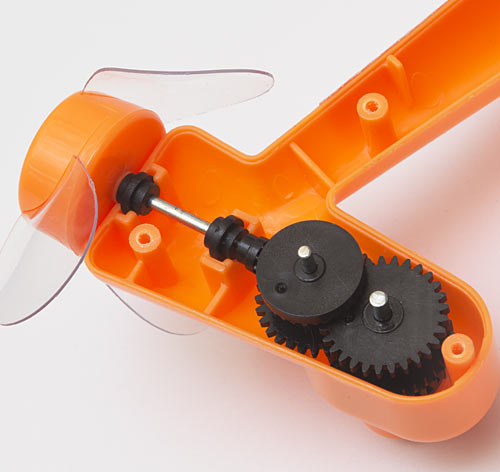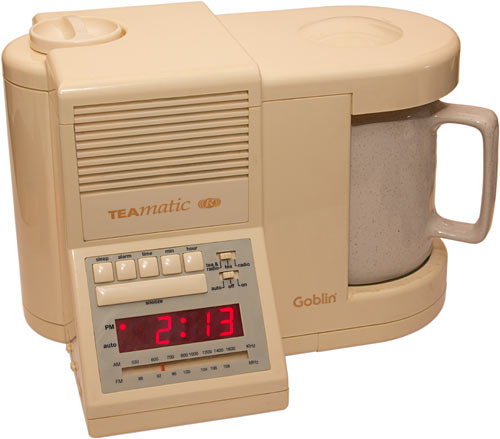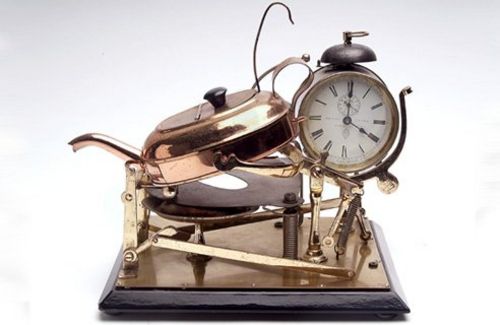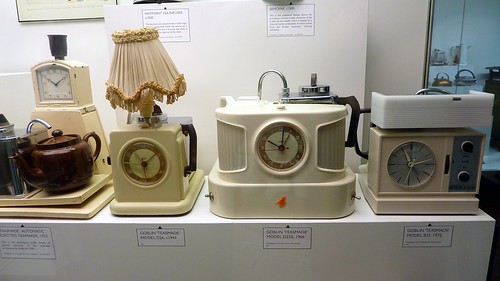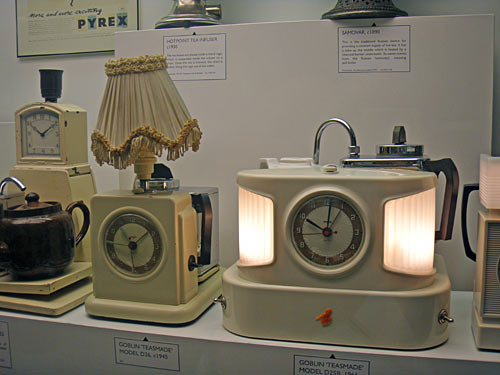I'm glad there's no PC version of Grand Theft Auto V, because I don't have a console, so this removes the temptation to play the darn thing.
If previous GTA games are anything to go by, GTA V will have numerous punishingly hard missions that are almost impossible to finish the first time, aircraft that are only slightly easier to fly than the real things, and a split personality in which it tries to tell some kind of serious crime story in a world in which vehicular homicide is a normal part of driving, cops try to murder you if you nudge their car while parking, and the entire city is wallpapered with Viz-level sight gags.
I much prefer the Saints Row games. They have the same basic structure as GTA and its other clones - open-sandbox city, plot missions and side diversions. And Saints Row started out with a pretty straightforward console-only GTA clone. But they've gotten crazier and crazier since.
This is a mission of average weirdness, in the last Saints Row game. (In case you missed it, the guy who put the tiger in the car is voiced by Hulk Hogan.)
Saints Row IV is a lot weirder than this.
I had to play all the way through it before I could write this, to make sure I knew about the part three-quarters of the way through where the game turns into Command & Conquer for an hour, or something.
It doesn't do that. It does have a few fun genre shifts, though, as you'd expect based on the little Atari Combat and text-adventure bits in the previous game.
Herewith, some almost-totally-spoiler-free observations:
If, like me, you're playing Saints Row IV on PC, you will probably not like the tight third-person camera. There is no in-game field-of-view adjustment. Get this mod to back the camera off before you even start playing.
The mod is the same one that did the same thing in Saints Row III (officially known as "Saints Row: The Third"; the next one will probably be "SaintV RoVV V.V"). Engine-wise there's almost no difference between SRTheThird and SRIV. This also means you do not need a very powerful PC to run it. Like Bioshock Infinite, SRIV is a game that has to run on current-generation consoles. So the PC version isn't quite as pretty as it might be, but has quite modest hardware requirements.
I've no complaints about any other components of the PC version of SRIV. Like Saints Row III, it plays nice with alt-tab, and on my computer at least, never crashes. There are very few non-crash bugs that I've noticed, either. Start a mission that requires you to go somewhere, and dick around doing a zillion random things, collecting stuff, buying clothes, playing whole minigames, whatever, on the way there? No problem, works fine. I did fall through the ground once, and got stuck under the scenery in a Diversion once, and once was glowing blue and floating around slightly above the ground until I saved and loaded. Oh, and sometimes the game decides to play a given NPC voice log whenever you start a play session. This is not a deal-breaker.
SRIV parodies a variety of other games, and a movie or three, quite well. Though the developers must have winced when they played Far Cry III: Blood Dragon and discovered that it opens with the exact same parody that opens SRIV, but does it better.
(If you've any interest in silly action games and Ahnie moofies, by the way, you must play Blood Dragon. There's less to it than there is to SRIV, but Blood Dragon is bargain-priced to compensate. And it is fucking hilarious.)
Saints Row IV has, of course, caused permanent damage to my psyche, because I am Australian and played the full version of the game, which you may have heard contains Things Australians Cannot Handle. In the case of SRIV, those things are a DLC-only weapon which resembles a Pear of Anguish on a pole...
...which you stick up people's bottoms, making them look rather surprised, and then they fly into the sky training happy little colourful stars.
It also contains characters taking imaginary alien drugs in a computer simulation within an actual game, in order to give themselves the ability to run and leap and punch like superheroes, in that computer simulation, within an actual game. Which will cause Australian children to start smoking crack, or something.
Aaaaaanyway, Saints Row IV grew out of an expansion pack for Saints Row III that was going to be called, with the series' typical intellectual humour, Enter the Dominatrix. Matrix-style, it'd be mostly in a simulated city, partly in the dystopian real world outside it.
They decided to expand that DLC into a whole game. And there's plenty of game here - an easy 24 hours of gameplay without rushing or dawdling. I like to play a few of the "Diversions" over and over and level weapons I don't even use much just in case I'm forced to use them on a mission, so I took thirty hours to finish the first time.
(I'm playing through again, to try different weapons and avoid a couple of upgrades that turned out to not be a great idea, like the one that gives your super-sprinting a tornado effect that blasts everything near you into the air. Oh, and like previous Saints Rows, there's two-player co-op as well, now including a few Diversions that you can only play if you have two people. That'd add an hour or three.)
Making a whole game out of a hypertrophied expansion pack could have been a very bad idea, but I think it actually works really well. With two caveats.
Caveat one: You still have all the car-customisation stuff from the previous game, but your eat-your-heart-out-Neo superpowers in the simulation and the lack of roads in the un-simulated world mean there's very little reason to bother. You can still tear around the city on the wrong side of the road and do burnouts to amuse pedestrians and terrify hostages in freshly-hijacked cars, for small cash and XP rewards. The game even gives you some... unusual... vehicles to play with. But the only vehicles that're actually useful in a game-progression sense now are fast aircraft, which can move you across the city a bit faster than you can run, and get you to high places if you can't be bothered solving a few jumping puzzles.
Caveat two: The city map is basically the same as in the last game, but now you've got superpowers, and the combination of the map and the somewhat clunky superpower controls (on PC, at least) isn't great when compared with games that were designed to work like this from the ground up. Look at the Prototype games, for instance; you never get hung up on an awning or cornice or something there, and it's significantly easier to land a super-jump exactly where you want to.
(Your movement powers in SRIV are utterly shamelessly cribbed from Prototype, but that in turn may have cribbed from the Crackdowns, and then there's Infamous and Destroy All Humans too... but those are all console-only and I've never played them, so I'm not sure. Saints Row IV may not even be the most ridiculous Action President game ever, because Metal Wolf Chaos also exists.)
There are an awful lot of blue collectible things in SRIV. YOU DO NOT NEED TO COLLECT THEM ALL, thank god. There's doubtless some achievement for getting them all, but I maxed out all of my superpowers and still had 200-odd blue things left over.
On normal difficulty, SRIV is pretty easy for any experienced PC gamer, especially if you do whatever side missions are currently available so you have their rewards before you do the next main mission. I like this. I'm not really here for a gruelling gaming challenge; I want to see the sights and have fun. I have a feeling of dread when I start a mission in a Grand Theft Auto game. I have a feeling of anticipation when I start one in the last couple of Saints Rows. (I never played Buggy Saints Row I; SRII was definitely harder than III or IV.)
Because SRIV is pretty easy, you don't need to grind for money or XP. If you enjoy playing a given Diversion over and over then go for your life, but if you power-level early on then you're probably going to be stuck at the level 50 cap with most of your gear maxed out for a few hours of gameplay at the end.
On the subject of which, the maximum-level ability upgrades in SRIV don't make you as tough as you were if you bought all the level 50 upgrades in SRIII. This is good, because the top SRIII abilities made you literally immune to harm from falls, vehicle impacts, fire, explosions, and all bullets. Only melee attacks could hurt you at all. This was somewhat ridiculous even by Saints Row standards.
Once you get past the non-stop over-the-topness of everything, this is actually quite a well-considered, highly-polished game. When you end a Diversion, for instance, you always end up back at the start location, so you can easily play it again if you want to. There's also a new, fun and elegant way to reset your notoriety to zero if you're tired of shooting cops. And it's impossible to leave followers behind when you Hulk-jump off into the distance.
The only really badly-judged thing I noticed in the whole game is that you spend a fair bit of time collecting blue thingummies, and there are a lot of windows in buildings that are also lit up blue. After a while you get a thingy that indicates actual collectibles on the minimap, though, which pretty much deals with that distraction.
This is not the Most Imaginative Game In History, but quite a lot of stuff happens that you would not expect, and the jokes are good. There is a modicum of challenge, and I presume a bit more if you choose the hard difficulty setting. But mainly it's just trying to be fun, and succeeding.
Playing this game while reading Ready Player One AND Promethea
has loosened my already uncertain grip on reality even more.
Highly recommended.


